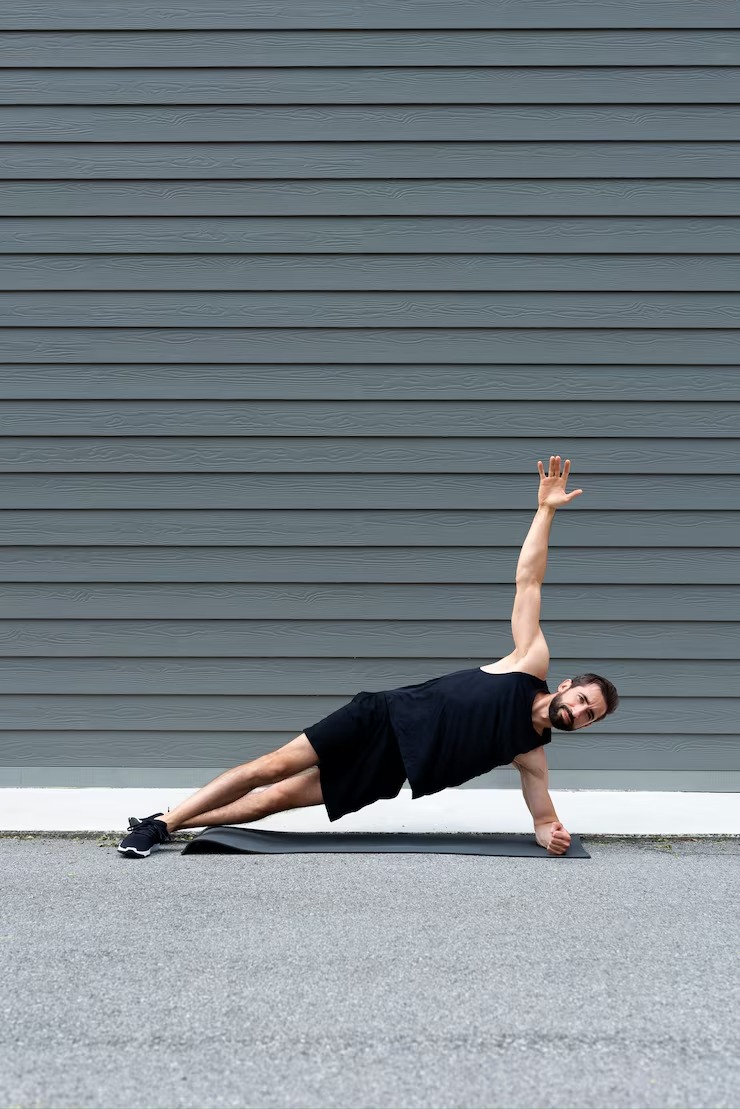Your core is the foundation of every movement you make, from bending down to tie your shoes to powering through a tough workout. A strong core isn’t just about aesthetics—it’s about stability, balance, and confidence. But let’s be honest: those lower abs can feel like the holy grail of fitness. They’re stubborn, tricky to target, and often hidden under a layer of fluff no matter how many crunches you do. I’ve been there, sweating through endless reps, wondering why my lower abs refused to show up to the party. The good news? With the right exercises, a sprinkle of patience, and some insider tips, you can transform your core and finally see results. In this article, I’ll walk you through seven lower ab exercises that actually work, backed by science and my own trial-and-error journey. Plus, I’ll share how to optimize your routine for maximum impact, avoid common pitfalls, and even sneak in some fun along the way. Ready to sculpt that core? Let’s dive in.
Why Lower Abs Are So Hard to Train
Lower abs are notoriously tough to develop because they’re part of the rectus abdominis, a single muscle that runs vertically along your abdomen. The lower portion is less engaged in everyday movements, making it harder to activate. Plus, genetics, body fat, and improper form can make progress feel like chasing a mirage.
The Role of Body Fat in Lower Ab Definition
You could have the strongest lower abs in the world, but if they’re covered by a layer of fat, they won’t show. Reducing overall body fat through a balanced diet and cardio is key to revealing those muscles. I learned this the hard way after months of ab workouts with no visible change—until I paired my routine with better nutrition.
Why Form Matters More Than Reps
It’s tempting to crank out 100 crunches and call it a day, but poor form wastes your effort and risks injury. Proper form engages the right muscles and maximizes results. When I slowed down and focused on controlled movements, I finally felt my lower abs working.
The 7 Best Lower Ab Exercises for a Stronger Core
These seven exercises are designed to target your lower abs effectively, with minimal equipment and maximum impact. I’ve tested them myself, and they’re backed by fitness experts for their ability to engage the rectus abdominis and transverse abdominis. Let’s break them down.
1. Reverse Crunches
Reverse crunches are a powerhouse for lower abs, focusing on controlled movement to avoid relying on momentum. Lie on your back, lift your legs, and curl your pelvis toward your chest. It’s simple but brutal when done right.
How to Do It
Lie flat on your back with your knees bent at 90 degrees and feet off the floor. Place your arms by your sides, palms down. Slowly lift your hips off the ground, curling them toward your chest, then lower back down with control. Aim for 3 sets of 12–15 reps.
- Pro Tip: Exhale as you lift your hips to engage your core more deeply.
- Common Mistake: Don’t swing your legs—keep the movement slow and deliberate.
2. Leg Raises
Leg raises are a classic for a reason: they isolate the lower abs like few other exercises. I used to dread these because they exposed my core’s weakness, but they’ve become a staple in my routine.
How to Do It
Lie on your back with legs straight and arms by your sides. Slowly raise your legs to a 90-degree angle, keeping them straight, then lower them back down without letting them touch the floor. Do 3 sets of 10–12 reps.
- Pro Tip: Press your lower back into the floor to avoid strain.
- Common Mistake: Avoid arching your back—it reduces effectiveness and risks injury.
3. Flutter Kicks
Flutter kicks are a dynamic move that keeps your lower abs under constant tension. They’re also great for building endurance, though they’ll leave you feeling the burn.
How to Do It
Lie on your back with legs extended and hands under your glutes for support. Lift your legs about 6 inches off the ground and alternate kicking them up and down in a small, controlled motion. Perform 3 sets of 30–40 seconds.
- Pro Tip: Keep your core braced to prevent your lower back from lifting.
- Common Mistake: Don’t let your legs drop too low, or you’ll stress your back.
4. Bicycle Crunches
Bicycle crunches hit both the upper and lower abs while engaging your obliques. They’re a multitasking move that feels like a full-core workout in one.
How to Do It
Lie on your back, hands behind your head, and legs lifted. Bring one knee toward your chest while twisting your opposite elbow to meet it, then switch sides in a pedaling motion. Aim for 3 sets of 15 reps per side.
- Pro Tip: Move slowly to maximize muscle engagement.
- Common Mistake: Don’t pull on your neck—let your abs do the work.
5. Mountain Climbers
Mountain climbers are a cardio-core combo that torches calories while targeting your lower abs. They’re fast-paced, so they’re perfect for adding intensity to your workout.
How to Do It
Start in a plank position with your hands under your shoulders. Quickly drive one knee toward your chest, then switch legs in a running motion. Do 3 sets of 40 seconds.
- Pro Tip: Keep your hips low to maintain a straight line from head to heels.
- Common Mistake: Avoid bouncing your hips—it reduces core engagement.
6. Hanging Leg Raises
If you have access to a pull-up bar, hanging leg raises are a game-changer. They challenge your lower abs and grip strength, making them a killer addition to your routine.
How to Do It
Hang from a pull-up bar with your arms straight. Slowly raise your legs to a 90-degree angle, keeping them straight, then lower them back down. Aim for 3 sets of 8–12 reps.
- Pro Tip: Engage your core before lifting to avoid swinging.
- Common Mistake: Don’t use momentum—control the movement for maximum effect.
7. Scissor Kicks
Scissor kicks are similar to flutter kicks but involve a wider range of motion, intensifying the burn in your lower abs. They’re tough but worth it.
How to Do It
Lie on your back with legs extended and hands under your glutes. Lift your legs 6 inches off the ground and cross them over each other in a scissor-like motion. Perform 3 sets of 30–40 seconds.
- Pro Tip: Keep your movements controlled to maintain tension in your abs.
- Common Mistake: Don’t rush—slow and steady maximizes results.
Comparison: Lower Ab Exercises vs. Full-Core Workouts
| Exercise | Primary Muscle Targeted | Equipment Needed | Difficulty Level | Best For |
|---|---|---|---|---|
| Reverse Crunches | Lower Abs | None | Beginner | Isolating lower abs |
| Leg Raises | Lower Abs | None | Intermediate | Building core strength |
| Flutter Kicks | Lower Abs | None | Intermediate | Endurance and fat burning |
| Bicycle Crunches | Lower Abs, Obliques | None | Beginner | Full-core engagement |
| Mountain Climbers | Lower Abs, Cardio | None | Intermediate | Cardio and core combo |
| Hanging Leg Raises | Lower Abs | Pull-up Bar | Advanced | Strength and grip training |
| Scissor Kicks | Lower Abs | None | Intermediate | Dynamic core endurance |
Why These Exercises Stand Out
These seven exercises are carefully chosen for their ability to target the lower abs while minimizing strain on other areas like the lower back. Unlike generic ab workouts, they focus on controlled, intentional movements that maximize muscle activation. I’ve found that mixing these into my routine 2–3 times a week keeps my core strong without feeling repetitive.
Pros and Cons of Lower Ab Workouts
Pros
- Targeted Strength: Specifically strengthens the lower abs, improving core stability.
- Minimal Equipment: Most exercises require no gear, making them accessible.
- Versatility: Can be done at home, the gym, or even while traveling.
- Improved Posture: A stronger core supports better spinal alignment.
Cons
- Patience Required: Visible results take time, especially if body fat is high.
- Risk of Poor Form: Incorrect technique can lead to back strain or injury.
- Not Enough Alone: Lower ab exercises need to be paired with diet and cardio for definition.
How to Build a Lower Ab Workout Routine
Creating a routine that works for you is key to consistency. When I started, I was haphazard—doing random exercises without a plan. Once I structured my workouts, I saw real progress. Here’s how to build your own routine.
Sample 20-Minute Lower Ab Workout
- Warm-Up (5 minutes): Light cardio (jogging, jumping jacks) to prep your core.
- Circuit (12 minutes): Do 3 rounds of Reverse Crunches (15 reps), Leg Raises (12 reps), Flutter Kicks (30 seconds), and Mountain Climbers (40 seconds).
- Cool-Down (3 minutes): Stretch with a cobra pose or child’s pose to release tension.
Tips for Success
- Perform this routine 2–3 times per week, with at least one rest day between sessions.
- Gradually increase reps or duration as your strength improves.
- Pair with a balanced diet to reduce body fat and reveal your abs.
Where to Get Equipment for Hanging Leg Raises
If you want to add hanging leg raises, a pull-up bar is a worthwhile investment. You can find affordable options online at retailers like Amazon or Rogue Fitness. For home setups, doorway pull-up bars are compact and budget-friendly.
People Also Ask (PAA)
What Are the Best Lower Ab Exercises for Beginners?
Reverse crunches and bicycle crunches are ideal for beginners due to their simplicity and low risk of injury. Start with 2 sets of 10–12 reps, focusing on form over speed. As you gain confidence, add leg raises or flutter kicks to your routine.
How Often Should I Train My Lower Abs?
Training your lower abs 2–3 times per week is optimal, allowing recovery time between sessions. Overtraining can lead to muscle fatigue or injury, so balance ab workouts with rest and other exercises.
Can You Target Lower Abs Without Equipment?
Yes, most lower ab exercises like reverse crunches, leg raises, and scissor kicks require no equipment. These bodyweight movements are effective and can be done anywhere, making them perfect for home workouts.
Why Don’t My Lower Abs Show Even After Training?
Visible abs depend on low body fat, which requires a combination of exercise, diet, and consistency. Even strong abs won’t show if covered by fat. Focus on a calorie-controlled diet and incorporate cardio for best results.
Common Mistakes to Avoid
When I first started training my lower abs, I made every mistake in the book—rushing through reps, neglecting form, and expecting instant results. Here are pitfalls to watch out for:
- Using Momentum: Swinging your legs or hips reduces ab engagement. Slow down for control.
- Neglecting Nutrition: Abs are made in the kitchen as much as the gym. Prioritize protein and whole foods.
- Overtraining: Doing ab exercises daily can lead to burnout or injury. Rest is crucial.
- Ignoring Other Core Muscles: A strong core includes obliques and transverse abdominis, so vary your workouts.
The Role of Diet in Lower Ab Definition
No matter how many leg raises you do, diet is the key to revealing your lower abs. I used to think I could out-train a bad diet, but I was wrong. Focus on:
- Calorie Deficit: To lose fat, consume fewer calories than you burn.
- High-Protein Foods: Chicken, eggs, and legumes support muscle repair.
- Healthy Fats: Avocados and nuts keep you satiated without excess calories.
- Low Sugar: Cut back on processed sugars to avoid bloating and fat gain.
For meal planning tools, apps like MyFitnessPal or Cronometer can help track your macros and stay on target.
SEO Insights for Lower Ab Content in 2025
Based on recent SEO trends, lower ab exercise content remains highly competitive but rankable with the right approach. SERP analysis shows that top-ranking pages focus on actionable, user-friendly content with clear instructions and visuals. Keywords like “lower ab exercises,” “core workouts at home,” and “best ab exercises for beginners” have strong search volume but require optimization for intent. Incorporating long-tail keywords like “how to target lower abs without equipment” and LSI terms like “core strength” or “ab workout routine” can boost visibility.
Optimizing for Featured Snippets
To land a featured snippet, structure sections like “How to Do It” with clear, step-by-step instructions in bullet points or numbered lists. For example, the leg raise instructions above are snippet-friendly due to their concise format. Including a table, like the comparison chart, also increases snippet potential.
FAQ
How Long Does It Take to See Lower Ab Results?
Results vary based on starting point, diet, and consistency, but expect 8–12 weeks for noticeable strength gains. Visible abs may take longer, depending on body fat percentage.
Can Lower Ab Exercises Help With Back Pain?
Yes, a stronger core supports your spine, reducing lower back strain. Exercises like reverse crunches and leg raises improve stability, but always consult a doctor for chronic pain.
Are Lower Ab Exercises Safe for Beginners?
Most lower ab exercises are safe if done with proper form. Start with beginner-friendly moves like reverse crunches and progress slowly to avoid injury.
What’s the Best Time to Do Ab Workouts?
There’s no “best” time, but I prefer mornings to kickstart my day with energy. Choose a time that fits your schedule and allows you to be consistent.
How Can I Make Lower Ab Workouts More Fun?
Add music, workout with a friend, or try a gamified fitness app like FitOn. Mixing up exercises keeps things fresh and engaging.
Final Thoughts
Transforming your core with these seven lower ab exercises is about more than just aesthetics—it’s about building strength, confidence, and a healthier you. I’ve shared my own journey, from frustrating plateaus to finally seeing progress, and I hope it inspires you to stick with it. Combine these exercises with a solid diet, proper form, and a dash of patience, and you’ll be amazed at what your core can do. Start with the sample routine, avoid common mistakes, and make these moves a regular part of your week. Your lower abs are ready to shine—now it’s up to you to make it happen. What’s your favorite core exercise? Drop a comment or share your progress!



